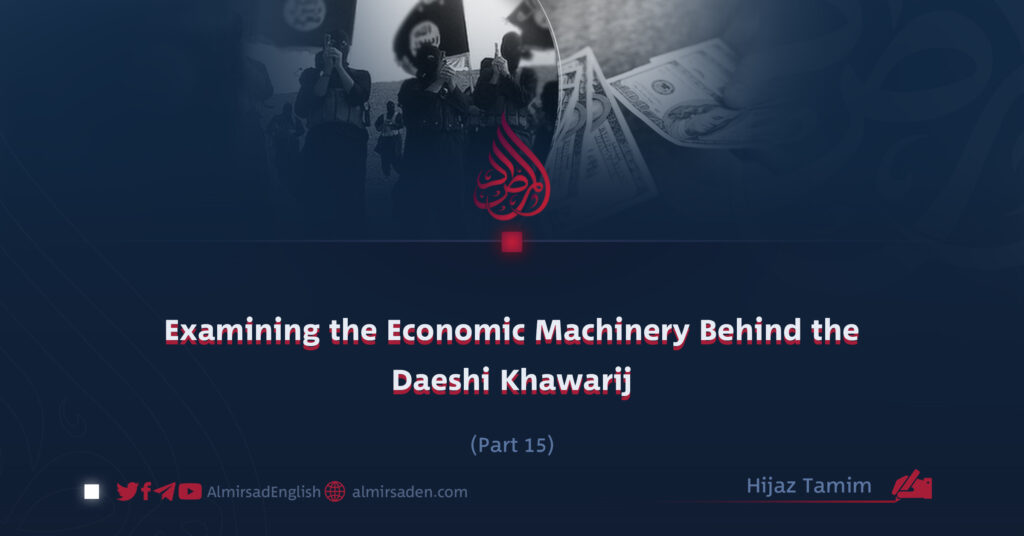Part 15
By Hijaz Tamim
Global Income from Human Trafficking (4)
Among the darkest sources of revenue for the Daeshi Khawarij is their deep involvement in human trafficking. The following examples illustrate how the group transformed human suffering into a business, building networks that stretched across borders and exploiting the most vulnerable members of society.
One of the most disturbing practices involved the trafficking of young girls from the Syria-Turkmenistan border region. Victims, often between the ages of fourteen and twenty, were handed over by local smuggling rings working with ISIS. Each girl brought the traffickers roughly one thousand dollars, paid through channels in Turkey and Turkmenistan. While some of these girls were eventually rescued, many remain unaccounted for. This case demonstrates how ISIS relied on collaboration with criminal networks to diversify and increase its income.
Children were also drawn into this machinery of exploitation. In Tikrit, Iraq, boys as young as ten were torn from their families and forced into military training camps. For each child trained as a fighter, ISIS could expect an annual return of about twelve hundred dollars. Iraqi security forces succeeded in freeing some of these children, yet many others were absorbed into the battlefield. This not only swelled ISIS’s ranks but also provided the group with steady revenue, showing how its military and financial strategies were deeply intertwined.
The exploitation of women was no less systematic. In Nineveh Province, women aged sixteen to twenty-eight were abducted in conflict zones and trafficked to other regions for sexual slavery. Each victim represented a profit of approximately two thousand two hundred dollars. International human rights organizations secured the release of some women, but countless others remained trapped in captivity. This revealed ISIS not only as a militant organization but also as a large-scale operator of human trafficking markets.
From the Syria-Turkey border, girls aged eighteen to twenty-five were trafficked into Turkey and beyond, destined for domestic servitude and in many cases sexual exploitation. Each victim generated between fifteen hundred and two thousand dollars for ISIS. Although a number of these women were later freed from refugee camps, the pattern underscored the group’s ability to extend its reach into international trafficking networks.
In Mosul, women aged twenty to thirty-five were seized and sold into slavery, often for domestic work or sexual exploitation. Each brought ISIS about eighteen hundred dollars. Some were fortunate enough to be freed, yet many remained in captivity. Such cases illustrate how trafficking served a dual purpose: a source of income and a means of sustaining the group’s fighters through forced servitude.
The exploitation of children continued in Syria’s Deir ez-Zor province, where boys aged twelve to seventeen were abducted, placed in military training, and dispatched to fight. Each of these children represented an annual profit of one to thirteen hundred dollars for ISIS. A handful were rescued by local opposition forces, but many still fight within the group’s ranks. Once again, ISIS demonstrated that it was willing to commodify childhood itself, treating young lives as both soldiers and financial assets.
Finally, in Aleppo, women aged twenty-two to thirty-five were trafficked for domestic labor. Each victim brought the group an estimated twelve hundred dollars. International humanitarian organizations managed to identify and free some of them, but the episode makes clear how ISIS systematically targeted women in war-ravaged regions as a reliable economic resource.
Taken together, these cases reveal a grim picture. ISIS did not treat human trafficking as a marginal activity; it was a carefully cultivated business model that funded its operations while deepening the suffering of those caught in the chaos of war. By turning girls, women, and children into commodities, the group entrenched itself as both a militant force and a criminal enterprise, profiting from human misery on a global scale.
